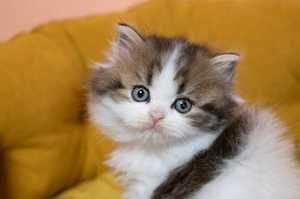
- Designazione:
- SFL 71
- Gruppo:
- Longhair
- Categoria:
- Principale
- Origine :
- Scotland
The origin of the breed
Scottish Straight mimics the appearance of Scottish Shorthair, with the only difference being their ear shape, which have a more common shape and are actually straight. Otherwise, Scottish Straight possess all the defining traits and characteristics of it’s fold counterpart. There are straight-eared kittens in scottish fold litters, and due to the fact that Fold-Fold crossings may result in musculoskeletal flaws, they were only used as a breeding material for scottish folds. Later, after geneticists Peter Dieter and Olifan Jackson have studied the matter, it was completely clear that heterozygous crossings are preferred to reliably produce healthy litters. Because of that, the demand for Scottish Straight grew along with their renown, and soon they were separated into a new breed. Scottish Straight is a feline for those wishing for a “normal” cat, for it is genetically free of aggressio n, mutations and inherited flaws yet with an open, somewhat childish and naive visage as well as a friendly scottish temper.
Appearance

An average-sized feline with a fit yet never heavy rectangular body. An adult scottish weighs around 6.5 - 12 lbs, sexual dimorphism affects this breed to some extent. It takes an experienced fancier to spot a straightear kitten at birth, for they are born the same, with the folding taking place at least at the third week.
Head: Round, with smooth skull and forehead lines, fluffy cheeks and full jawline. The muzzle is wide, wound and is futher highlighted by puffy whisker pads. The nose is wide, short and straight, with a developed stopless transition. The chin is well defined, round and strong, but not protruding.
Eyes: Large, round, broadly set and wide open, giving their look an owl-like quality. Eye colour be harmonious with that of the coat.
Ears: Small to medium in size with rounded tips, set straight and not very broad at base. Auricle is of thin skin and feels like parchment to the touch. While outer surface is densely coated, inside hair resembles thick brushes.
Neck: Short, wide and muscular, resulting in a head that visually connects directly with upper body.
Body: Medium in size and length, thick and muscular, with a fairly avergae bone structure.
Legs: Muscular, fairly ordinary in thickness and length, well proportional to body length.
Paws: Round, looking like an oval "glove", compact and medium and average in size.
Tail: Long in proportional to the body, medium and girth. All joints should be articulate, tail should taper to a narrower tip.
Coat: Short, very soft, silky, not too clinging to the body.
Colours: All colours are accepted, including solid, tortie, bltoched, colourpoint and others.
Flaws: Wide set, british style ears; Thick auricle; Flat horehead; Developed "stop"; Arching spine; Heavy set body; Crooked legs, touching with their knees; Any anomalies of bone and limb structure; Stiff and inarticulate tail; Noisy, clicking, painful movement.
Disqualification on shows: Crooked, short and stiff tail with thick vertebrae; Extra or missing fingers; Restricted, painful movement; Bad overall health.
Universal disqualification: Amputated claws, criptorchidism, deafness.
Character traits and features
Scottish Straight is known for it’s calm, level temper. It behaves rather friendly, never showing a sign of aggression and trying to avoid conflict at any cost. These felines adapt well to any kind of living condition.
Maintenance and care
Scottish Straight are breeze to look after. They are straight, fit and are quite healthy. As with any shorthair breed, it is washed with a special treatment once every four weeks. During the molt season you may do this on a weekly basis.
Nutrition choices
Balanced nutritions are recommended.
Alternative and obsolete breed names
Scottish shorthair;
Scottish straightear.

